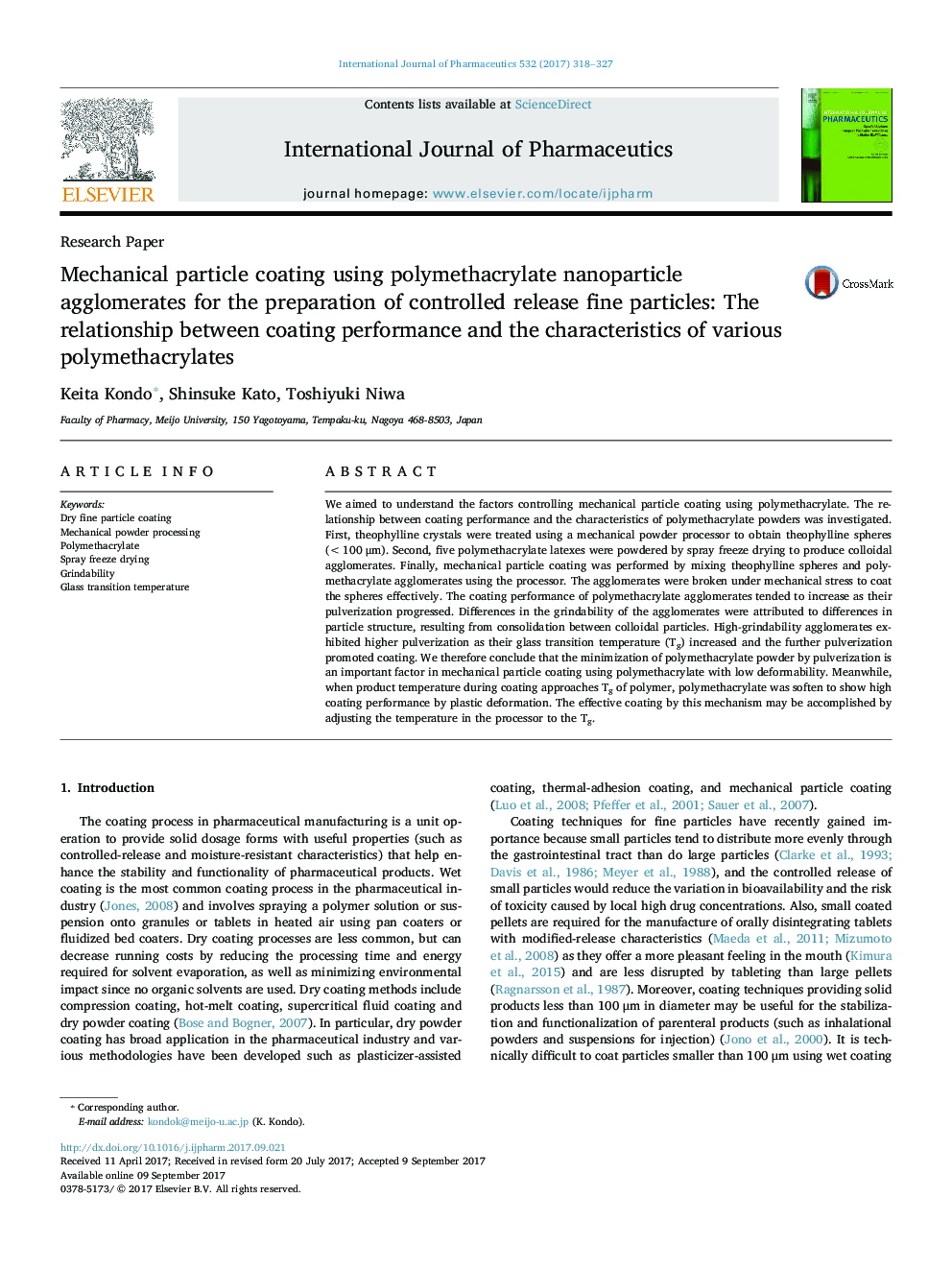| Article ID | Journal | Published Year | Pages | File Type |
|---|---|---|---|---|
| 5550051 | International Journal of Pharmaceutics | 2017 | 10 Pages |
We aimed to understand the factors controlling mechanical particle coating using polymethacrylate. The relationship between coating performance and the characteristics of polymethacrylate powders was investigated. First, theophylline crystals were treated using a mechanical powder processor to obtain theophylline spheres (<100 μm). Second, five polymethacrylate latexes were powdered by spray freeze drying to produce colloidal agglomerates. Finally, mechanical particle coating was performed by mixing theophylline spheres and polymethacrylate agglomerates using the processor. The agglomerates were broken under mechanical stress to coat the spheres effectively. The coating performance of polymethacrylate agglomerates tended to increase as their pulverization progressed. Differences in the grindability of the agglomerates were attributed to differences in particle structure, resulting from consolidation between colloidal particles. High-grindability agglomerates exhibited higher pulverization as their glass transition temperature (Tg) increased and the further pulverization promoted coating. We therefore conclude that the minimization of polymethacrylate powder by pulverization is an important factor in mechanical particle coating using polymethacrylate with low deformability. Meanwhile, when product temperature during coating approaches Tg of polymer, polymethacrylate was soften to show high coating performance by plastic deformation. The effective coating by this mechanism may be accomplished by adjusting the temperature in the processor to the Tg.
Graphical abstractDownload high-res image (321KB)Download full-size image
